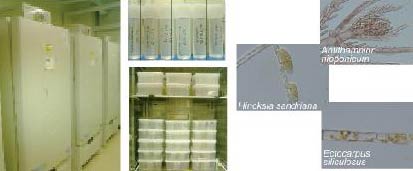About KURCIS
The relatively sheltered coasts of the world's inland seas provide moderate environmental conditions that have encouraged the development of diverse human cultures, as well as various industries and transportation system. At the same time, inland seas are especially vulnerable to pollution and environmental damage caused by human activities.What factors are responsible for the particular features of these coastal environments? How are environmental functions different from those of open coasts? How does biodiversity compare with othe coasts? We are struggling to find answers to such questions, by promoting research and education for conserving these exceptionally sensitive environments.
KU-MACC
The Kobe University Macroalgal Culture Collection (KU-MACC) collects and distributes vatious seaweed culture strains, including some with complete genome data, as a part of National BioResource Project under collaboration with the National Institute for Environmental Studies (NIES).
Others
KURCIS conducts cooperative research projects with various private companies to develop environmental restoration technologies using recycled industrial materials to improve aquatic environment of enclosed seas.
KURCIS conducts research projects in response to requests from local governments to reconstruct the history of local paleo-environmental variations associates with glacial sea-level and climate changes.

KURCIS is currently operaing two long-term monitoring sites, 'Awaji Yura' (Seto Inland Sea coast) and 'Takeno' (Sea of Japan coast) in the Monitoring Site 1000 Project of the Ministry of Environment, and we are registered as a Core-Site in the JaLTER (Japan Long Term Ecological Research) project.














